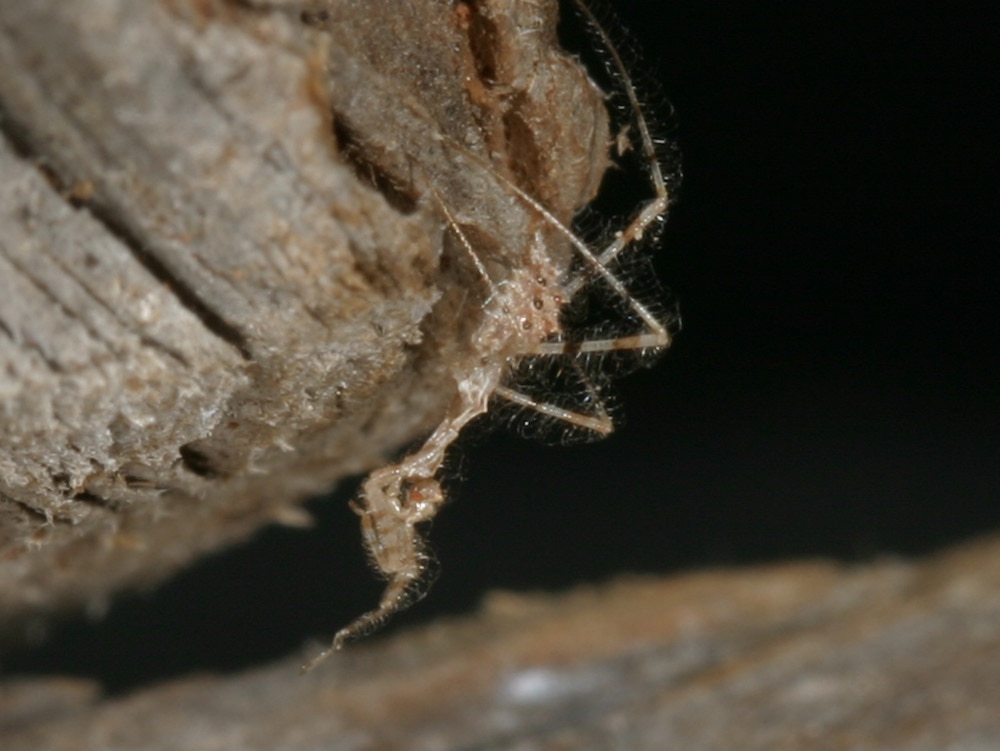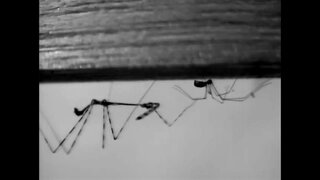Create a free profile to get unlimited access to exclusive videos, sweepstakes, and more!
Web of lies! Assassin bugs use gentle taps to hunt unsuspecting spiders
Knock, knock...

In the John Wick films, Keanu Reeves plays a retired assassin hellbent on getting revenge on the men who broke into his home and killed his dog. The plot is a little outlandish, but the results are deadly serious. Wick, armed with the skills which made him a successful professional killer, is now up against the most dangerous prey he’s ever hunted, other killers.
This setup, and the charms of Reeves, was enough to earn two sequels with at least one more on the way. But while the high-action antics of a bunch of trained killers might seem over the top to us, it might be familiar to some of the smallest animals on Earth.
Thread-legged insects, also known as assassin bugs, spend most of their lives in spiders’ webs. For most other creepy crawlies, that’s the last place they’d want to be. And if they happen to find themselves in a web, it often is the last place they visit. Assassin bugs, however, consider a spider web a fine-dining establishment where they find their favorite meals.
Stenolemus bituberus, one variety of assassin bug, hails from Australia and feeds exclusively on spiders. They capture their prey through one of two methods: either slowly and quietly stalking up to the spider, or luring the spider toward them. Stalking involves traveling up the web toward the spider, making efforts to remain unnoticed until they’re within striking distance. Luring involves plucking at the threads of the web, causing the spider to think a tasty snack has been caught, and they come running for the dinner bell.
In both cases, assassin bugs do something pretty interesting once the spider gets close. Rather than strike before being noticed, they use their antennae to tap the spider multiple times, sometimes for periods of several minutes. It’s the miniature equivalent to John Wick slinking through the shadows and tapping his target on the shoulder before taking them out. Needless to say, It’s a bizarre behavior to exhibit when faced with a deadly opponent.

Anne E. Wignall, from the School of Natural and Computational Sciences at Massey University in New Zealand, set out to figure out why assassin bugs do this, and what impact the tapping has on spiders. The findings were published in the Biological Journal of the Linnean Society.
The hunting behavior of assassin bugs is complex, requiring a number of specific strategies in order to be successful. Spiders are attuned to changes in the web which might alert them to the presence of trapped prey, so assassin bugs navigate the webs carefully in order to avoid detection until they’re ready.
“They have a special way of walking in which they arrhythmically bounce and sway,” Wignall told SYFY WIRE. “They also tap the substrate several times with their leg before placing it down to take a step. We think that this works as a self-generated smokescreen that hides the profile of the footsteps in the web. They also exploit natural smokescreens like wind and vibrations in the web to approach a spider. These generate noise in the web to effectively mask their movements.”
Wignall went on to explain that assassin bugs carefully choose their routes in order to minimize contact with the web on their way toward the spider, and will even cut silk threads in their way in order to avoid detection.
All of this careful work is seemingly undone by the intentional tapping at the finish line, but Wignall’s simulated experiments suggest that tapping the spider vastly increases the likelihood of a successful hunt.
To test the impact of tapping, they used dog hair to gently tap against the legs of Pholcus phalangioides — commonly known as daddy long-legs or cellar spiders — to simulate the tapping of assassin bugs. They then used vibrating tuning forks placed against the web to mimic the struggling vibrations of a captured prey animal.
“We took quite a while to test different tappers,” Wignall said. “We had used cat’s whiskers in earlier experiments, but they were quite stiff, and it was difficult to tap the spider gently enough. We then tried human hair, but it wasn’t stiff enough and tended to knock threads of the web accidentally. A dog hair ended up being the perfect balance between being rigid enough that it didn’t flop onto the silk threads when moving into position, but with enough flexibility that we could tap the spider leg without also making the spider’s leg move.”
When tapped with the dog hair before being presented with simulated prey vibrations, spiders were more likely to ignore the vibrations and correspondingly less likely to attack. Tapping appears to lull the spiders into a state of complacency and false security, giving the assassin bugs an opportunity to strike without fear of counterattack.
Wignall suggests this sort of tapping may be a form of communication among interspecies spiders. A way of saying “Hey there, I’m one of you. Don’t attack.” The assassin bugs may have simply co-opted this behavior as a hunting strategy.
Next time you feel a tap on your shoulder, run like your life depends on it. You may be mere moments away from being pierced by a venomous proboscis.

























